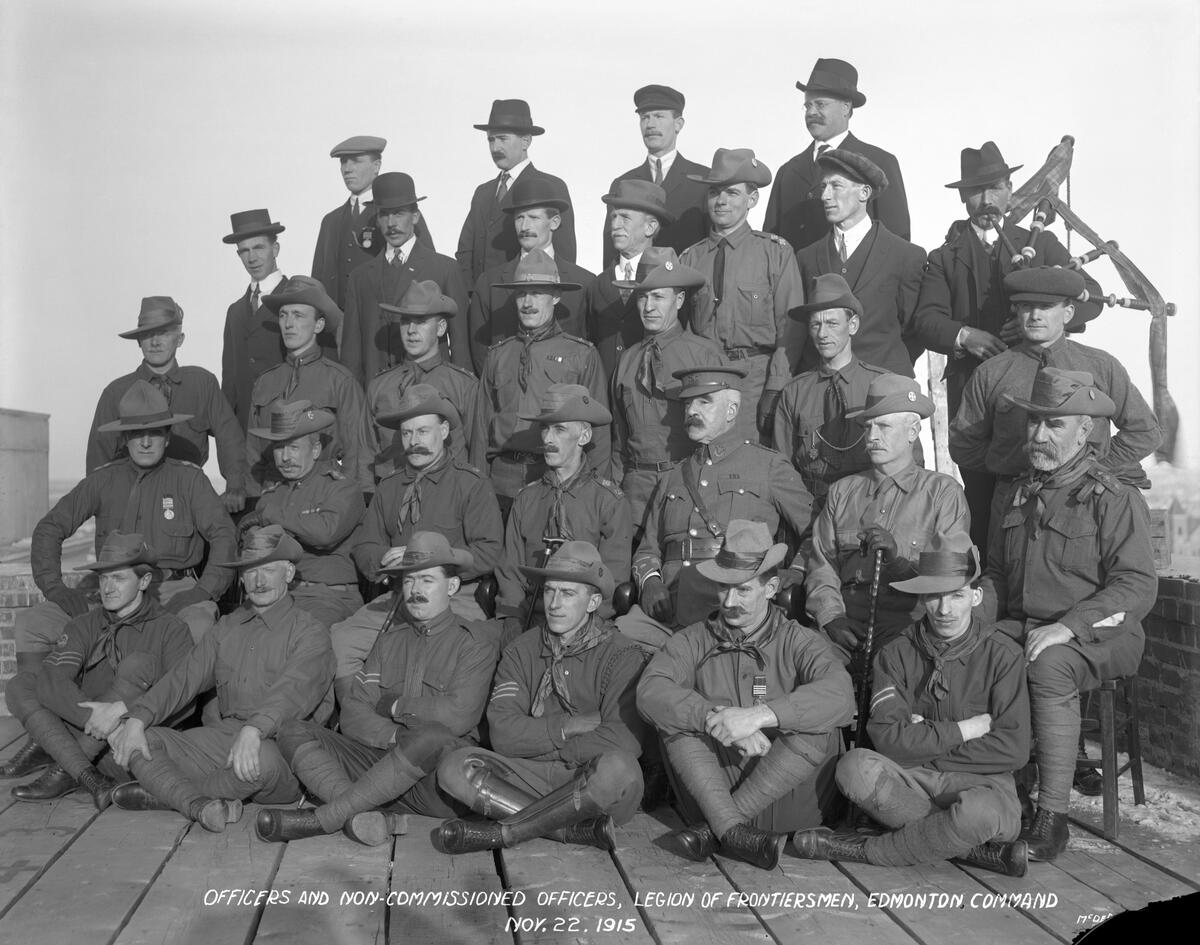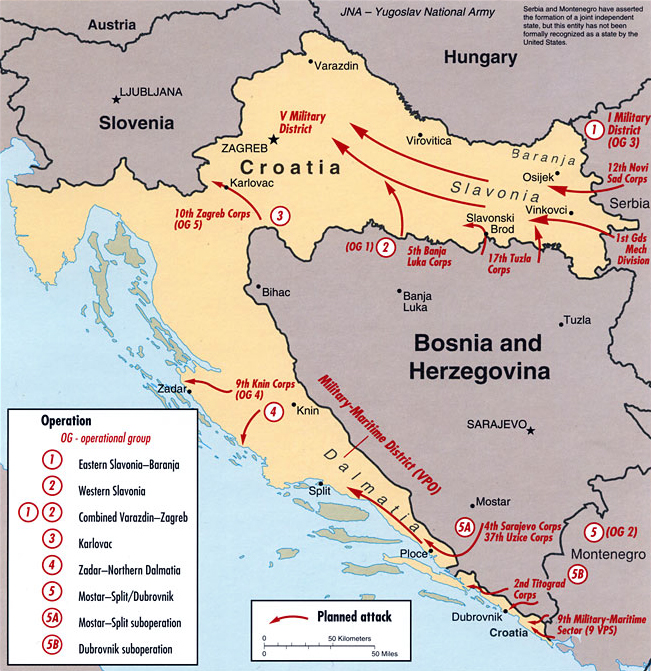|
Leva Supoderica
Leva Supoderica ( sr-Cyrl, Лева Суподерица) was a Serbian paramilitary unit and Party militia formed in 1991, originally under the wing of the Serbian Radical Party. the unit was incorporated into the 1st Guards Mechanised Brigade of the Yugoslav People's Army. Leva Supoderica was active in Croatia, commanded by the war criminal Milan "Kameni" Lančužanin during the Battle of Vukovar in the aftermath of the battle, Leva Supoderica were one of many perpetrators in the Vukovar massacre, the unit also guarded the Ovčara camp. War crimes In 2017, a couple of members of the Leva Supoderica unit were convicted for the deaths of more than 200 Croatian civilians at the Ovčara camp. The Leva Supoderica unit along with the Vukovar Territorial Defense (TO) tortured around 20 Croatian prisoners that had been sent to the Ovčara camp. Once the Yugoslav People’s Army withdrew to relieve the besieged barracks and other reasons, the Leva Supoderica unit and the Vukovar TO de ... [...More Info...] [...Related Items...] OR: [Wikipedia] [Google] [Baidu] |
Serbian Radical Party
The Serbian Radical Party (, abbr. SRS) is a Far-right politics in Serbia, far-right, Ultranationalism, ultranationalist List of political parties in Serbia, political party in Serbia. Founded in 1991, its co-founder, first and only leader is Vojislav ≈Ýe≈°elj. The SRS was founded in 1991 as a merger of the Serbian Chetnik Movement (1990), Serbian Chetnik Movement, led by ≈Ýe≈°elj, and the People's Radical Party (1990), People's Radical Party, led by Tomislav Nikoliƒá. Upon formation, they became the president and deputy president of SRS respectively. During the first half of the 1990s the SRS supported the ruling Socialist Party of Serbia regime, which had contributed greatly to the rise of SRS through the use of media. The party had strong support until the 2000 Serbian parliamentary election, 2000 election, when SRS suffered a major defeat, but through Populism, populist rhetoric it became the most voted party in the early-to-mid 2000s. ≈Ýe≈°elj voluntarily surrendered to th ... [...More Info...] [...Related Items...] OR: [Wikipedia] [Google] [Baidu] |
Yugoslav People's Army
The Yugoslav People's Army (JNA/; Macedonian language, Macedonian, Montenegrin language, Montenegrin and sr-Cyrl-Latn, –à—É–≥–æ—Å–ª–æ–≤–µ–Ω—Å–∫–∞ –Ω–∞—Ä–æ–¥–Ω–∞ –∞—Ä–º–∏—ò–∞, Jugoslovenska narodna armija; Croatian language, Croatian and ; , JLA), also called the Yugoslav National Army, was the military of the Socialist Federal Republic of Yugoslavia and its antecedents from 1945 to 1992. Origins The origins of the JNA started during the Yugoslav Partisans of World War II. As a predecessor of the JNA, the People's Liberation Army of Yugoslavia (NOVJ) was formed as a part of the Resistance during World War II, anti-fascist World War II in Yugoslavia, People's Liberation War of Yugoslavia in the Bosnian town of Rudo on 22 December 1941. After the Yugoslav Partisans liberated the country from the Axis Powers, that date was officially celebrated as the "Day of the Army" in the Socialist Federal Republic of Yugoslavia (SFR Yugoslavia). In March 1945, the NOVJ was renamed the "Yugo ... [...More Info...] [...Related Items...] OR: [Wikipedia] [Google] [Baidu] |
Paramilitary Organizations Based In Serbia
A paramilitary is a military that is not a part of a country's official or legitimate armed forces. The Oxford English Dictionary traces the use of the term "paramilitary" as far back as 1934. Overview Though a paramilitary is, by definition, not a military, it is usually equivalent to a light infantry or special forces in terms of strength, firepower, and organizational structure. Paramilitaries use combat-capable kit/equipment (such as internal security/SWAT vehicles), or even actual military equipment (such as long guns and armored personnel carriers; usually military surplus resources), skills (such as battlefield medicine and bomb disposal), and tactics (such as urban warfare and close-quarters combat) that are compatible with their purpose, often combining them with skills from other relevant fields such as law enforcement, coast guard, or search and rescue. A paramilitary may fall under the command of a military, train alongside them, or have permission to use their ... [...More Info...] [...Related Items...] OR: [Wikipedia] [Google] [Baidu] |
Military Units And Formations Of The Croatian War Of Independence
A military, also known collectively as armed forces, is a heavily armed, highly organized force primarily intended for warfare. Militaries are typically authorized and maintained by a sovereign state, with their members identifiable by a distinct military uniform. They may consist of one or more military branches such as an army, navy, air force, space force, marines, or coast guard. The main task of a military is usually defined as defence of their state and its interests against external armed threats. In broad usage, the terms "armed forces" and "military" are often synonymous, although in technical usage a distinction is sometimes made in which a country's armed forces may include other paramilitary forces such as armed police. Beyond warfare, the military may be employed in additional sanctioned and non-sanctioned functions within the state, including internal security threats, crowd control, promotion of political agendas, emergency services and reconstruction, prot ... [...More Info...] [...Related Items...] OR: [Wikipedia] [Google] [Baidu] |
Paramilitary Organizations In The Yugoslav Wars
A paramilitary is a military that is not a part of a country's official or legitimate armed forces. The Oxford English Dictionary traces the use of the term "paramilitary" as far back as 1934. Overview Though a paramilitary is, by definition, not a military, it is usually equivalent to a light infantry or special forces in terms of strength, firepower, and organizational structure. Paramilitaries use combat-capable kit/equipment (such as internal security/SWAT vehicles), or even actual military equipment (such as long guns and armored personnel carriers; usually military surplus resources), skills (such as battlefield medicine and bomb disposal), and tactics (such as urban warfare and close-quarters combat) that are compatible with their purpose, often combining them with skills from other relevant fields such as law enforcement, coast guard, or search and rescue. A paramilitary may fall under the command of a military, train alongside them, or have permission to use their ... [...More Info...] [...Related Items...] OR: [Wikipedia] [Google] [Baidu] |
Vojislav ≈Ýe≈°elj
Vojislav ≈Ýe≈°elj ( sr-Cyrl, –í–æ—ò–∏—Å–ª–∞–≤ –®–µ—à–µ—ô, ; born 11 October 1954) is a Serbian politician and convicted war criminal. He is the founder and president of the far-right Serbian Radical Party (SRS). Between 1998 and 2000, he was a Deputy Prime Minister of Serbia, deputy prime minister of Serbia. He surrendered to the International Criminal Tribunal for the former Yugoslavia, ICTY in February 2003, but his trial did not begin until November 2007. ≈Ýe≈°elj's trial was marred by controversy: he went on a hunger strike for nearly a month until finally being allowed to represent himself, regularly insulted the judges and court prosecutors once proceedings commenced, disclosed the identities of protected witnesses and was penalised on three occasions for disrespecting the court. He did not call any witnesses in his defence. After spending 11 years and 9 months in detention in the United Nations Detention Unit of Scheveningen during his trial, ≈Ýe≈°elj was permitted to tem ... [...More Info...] [...Related Items...] OR: [Wikipedia] [Google] [Baidu] |
White Eagles (paramilitary)
The White Eagles (), also known as the Avengers (), were a Serbian paramilitary group associated with the Serbian National Renewal (SNO) and the Serbian Radical Party (SRS).Allen, Beverly (1996) ''Rape Warfare: The Hidden Genocide in Bosnia-Herzegovina and Croatia'' University of Minnesota Press, Minneapolis, Minnesota, pp. 154-155, The White Eagles fought in Croatia, Bosnia and Herzegovina and Kosovo during the Yugoslav Wars.Po naređenju: ratni zločini na Kosovu (Izveštaj Human Right Watch-a) In the 2003 indictment from the |
Asser Institute
The T.M.C. Asser Instituut (or ''Asser Institute'') is a professional inter-university centre of knowledge and research. The institute carries out research in private and public international law, European law, as well as all other related fields, including international commercial arbitration, international sports law and international humanitarian and criminal law. It was established in 1965 in The Hague and it is affiliated with the University of Amsterdam. Since September 2021 the institute also hosts the Special Chair Arms Control Law. The institute is named after Tobias Michael Carel Asser (1838–1913), who was a Dutch jurist, and co-winner (with Alfred Fried) of the Nobel Peace Prize in 1911 for his role in the formation of the Permanent Court of Arbitration at the first Hague peace conference (1899). He also advocated for the creation of an international academy of law, which led to founding of the ''Revue de Droit International et de Législation Comparée'' with John ... [...More Info...] [...Related Items...] OR: [Wikipedia] [Google] [Baidu] |
Humanitarian Law Center
Humanitarian Law Center (HLC) ( sr-Latn, Fond za Humanitarno pravo, ) is a Serbian non-governmental organisation with offices in Belgrade, Serbia, and Pristina, Kosovo.Humanitarian Law Center website , accessed 22 January 2011 It was founded in 1992 by Nataša Kandić to document violations across the former Yugoslavia in armed conflicts in , |
Battle Of The Barracks
The Battle of the Barracks () was a series of engagements that occurred in mid-to-late 1991 between the Croatian National Guard (ZNG, later renamed the Croatian Army) and the Croatian police on one side and the Yugoslav People's Army (JNA) on the other. The battle took place around numerous JNA posts in Croatia, starting when Croatian forces blockaded the JNA barracks, weapons storage depots and other facilities. It formally began on 14 September; its objective was to neutralise the JNA positions in ZNG-held territory and to secure arms and ammunition supplies for the poorly equipped ZNG. The Battle of the Barracks was an escalation of the conflict between Croatian authorities and Croatian Serbs who openly revolted in August 1990 and the JNA's efforts to preserve the Yugoslav federation. At the same time, Croatia made moves towards achieving independence from Yugoslavia. The Battle of the Barracks briefly preceded the start of the JNA's campaign in Croatia—itself amended ... [...More Info...] [...Related Items...] OR: [Wikipedia] [Google] [Baidu] |
ICTY
The International Criminal Tribunal for the former Yugoslavia (ICTY) was a body of the United Nations that was established to prosecute the war crimes that had been committed during the Yugoslav Wars and to try their perpetrators. The tribunal was an ''ad hoc'' court located in The Hague, Netherlands. It was established by Resolution 827 of the United Nations Security Council, which was passed on 25 May 1993. It had jurisdiction over four clusters of crimes committed on the territory of the former Yugoslavia since 1991: grave breaches of the Geneva Conventions, violations of the laws or customs of war, genocide, and crimes against humanity. The maximum sentence that it could impose was life imprisonment. Various countries signed agreements with the United Nations to carry out custodial sentences. A total of 161 persons were indicted; the final indictments were issued in December 2004, the last of which were confirmed and unsealed in the spring of 2005. The final fugitive, ... [...More Info...] [...Related Items...] OR: [Wikipedia] [Google] [Baidu] |
Ovčara Camp
Ovƒçara was a Serbian transit camp for Croatian prisoners during the Croatian War of Independence, from October to December 1991, and the location of the Ovƒçara massacre. Prison camp Ovƒçara is located 5 kilometers southeast of the city of Vukovar. It is a desolate stretch of land where the Vukovar agricultural conglomerate built cattle-raising facilities after World War II. These facilities are storage hangars, which are fenced and can be easily guarded. The hangars are made of brick and have a big sliding front door, which includes a small door. The Serbian forces turned Ovƒçara into a prison camp in early October 1991. Aside from the massacre, 3,000 to 4,000 men prisoners were temporarily held in the camp before being transported to the prison in Sremska Mitrovica or to the local army barracks, which was the transit point for the Serbian detention camps of Stajiƒáevo, Begejci and others. Some of the Serb forces were led by ≈Ωeljko Ra≈ænatoviƒá ‚Äî also known as "Arkan" ‚ ... [...More Info...] [...Related Items...] OR: [Wikipedia] [Google] [Baidu] |


